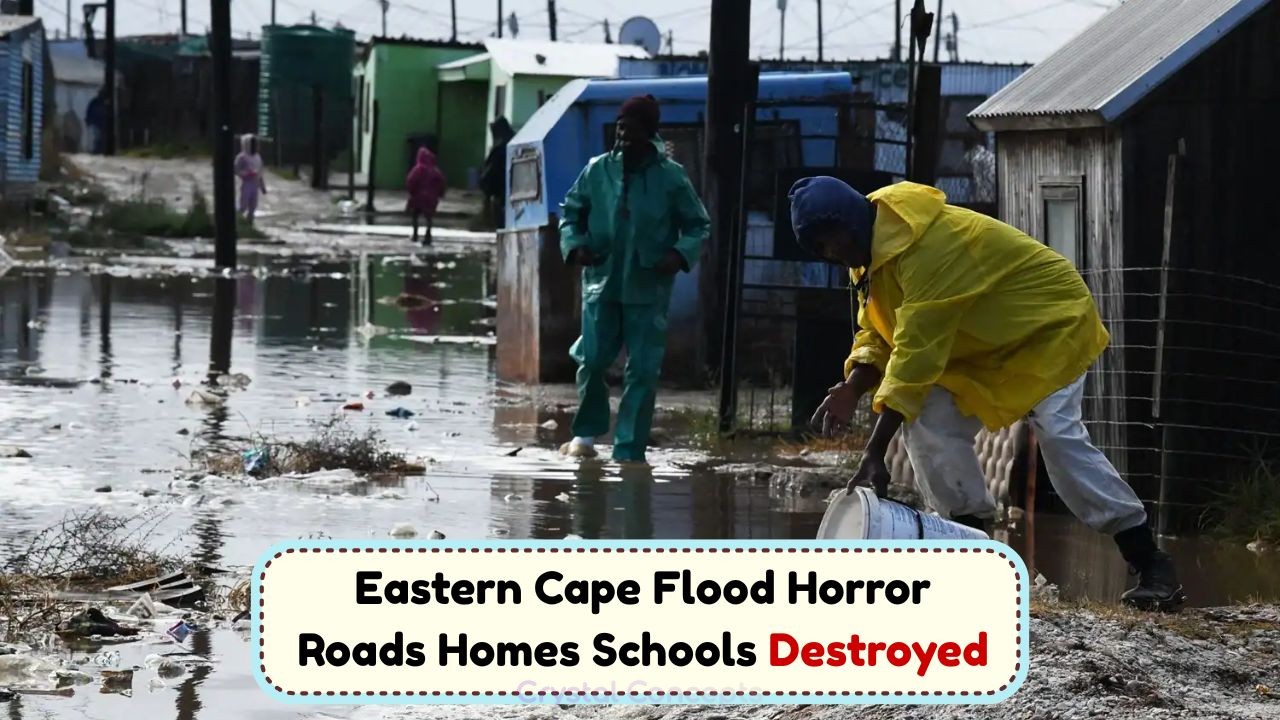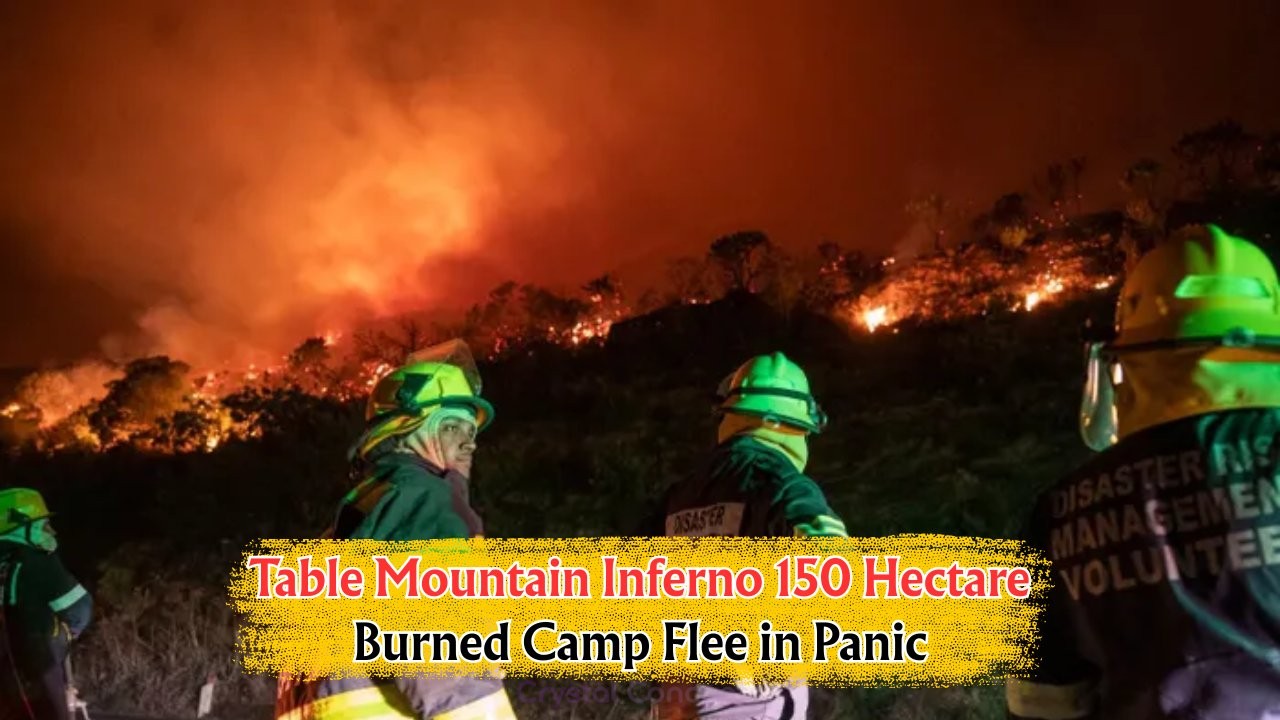Eastern Cape’s June 2025 Flood Disaster: In June 2025, the Eastern Cape was engulfed by devastating floods that tragically claimed the lives of 103 individuals. The region, already grappling with infrastructural challenges, found itself in a dire situation as communities were washed away by relentless rains. These floods were not only a natural catastrophe but also highlighted significant lapses in emergency preparedness and response. Locals have voiced their frustration over delayed relief efforts, which exacerbated the crisis, leaving numerous families stranded without basic necessities. This tragic episode underscored the urgent need for improved disaster management strategies in South Africa, particularly in vulnerable areas like the Eastern Cape.
Impact of the June 2025 Floods on Eastern Cape
The June 2025 floods left a profound impact on the Eastern Cape, disrupting lives, livelihoods, and local infrastructure. The torrential rains led to widespread destruction, with homes submerged and roads rendered impassable. Many residents had to be evacuated as floodwaters rose to dangerous levels. The agricultural sector, a backbone of the region’s economy, suffered immensely, with crops destroyed and livestock lost. Schools and healthcare facilities were also affected, further complicating recovery efforts. The emotional toll on the community was equally significant, with families mourning lost loved ones and grappling with the loss of their homes and belongings. The floods of June 2025 served as a stark reminder of the vulnerabilities faced by the Eastern Cape, necessitating swift action to fortify the region against future natural disasters.
- Significant damage to infrastructure
- Displacement of thousands of residents
- Severe impact on agriculture
- Disruption of education and healthcare services
- Emotional and psychological trauma for survivors
- Increased demand for emergency relief
- Need for improved disaster response strategies
- Highlighting of systemic vulnerabilities
Delayed Relief Efforts: A Critical Analysis
The delayed relief efforts in the wake of the Eastern Cape floods drew significant criticism from both local and national stakeholders. The bottlenecks in response were attributed to a combination of logistical challenges, bureaucratic red tape, and a lack of preparedness. As floodwaters surged, many affected areas remained inaccessible, complicating the delivery of much-needed aid. Government and non-governmental organizations struggled to coordinate their efforts effectively, leading to gaps in service delivery. The lack of timely support left many families without essential supplies, such as food, clean water, and medical assistance. This situation highlighted the necessity for a more agile and coordinated disaster response framework, which should include pre-positioned supplies, streamlined communication channels, and robust contingency planning. Addressing these issues is crucial to ensuring that future relief efforts are swift and comprehensive, minimizing the impact on vulnerable communities.
| Relief Effort | Challenges |
|---|---|
| Distribution of aid | Logistical bottlenecks |
| Coordination between agencies | Bureaucratic delays |
| Access to affected areas | Inaccessible roads |
| Provision of basic necessities | Lack of pre-positioned supplies |
| Communication | Inefficient channels |
| Healthcare support | Shortage of medical personnel |
| Rehabilitation efforts | Funding constraints |
| Community engagement | Lack of awareness programs |
Lessons Learned from Eastern Cape’s Flood Tragedy
The tragic events of June 2025 in the Eastern Cape offer several lessons for disaster management and preparedness. First and foremost, there is an urgent need for comprehensive risk assessment and planning to identify vulnerable areas and communities. Developing robust early warning systems can significantly mitigate the impact of such natural disasters, providing communities with the necessary time to evacuate to safety. Additionally, investing in resilient infrastructure, such as flood defenses and improved drainage systems, can help minimize damage. Effective training programs for emergency responders and community members are essential to ensure a coordinated response. Lastly, fostering strong partnerships between government, private sector, and non-governmental organizations can facilitate more efficient resource mobilization and distribution. These lessons, if implemented, can strengthen South Africa’s resilience against future disasters and safeguard its communities.
- Comprehensive risk assessments
- Robust early warning systems
- Investment in resilient infrastructure
- Training for emergency responders
- Strong public-private partnerships
- Community preparedness programs
Emergency Preparedness: Key Strategies for the Future
In light of the Eastern Cape floods, it is imperative to reassess and strengthen emergency preparedness strategies across South Africa. Central to this is the development of a national framework that outlines roles, responsibilities, and processes for disaster management. Utilizing technology to enhance communication and coordination can significantly improve response times. Implementing community-based disaster management programs empowers local populations to take proactive measures in safeguarding themselves. Regular drills and simulations can prepare both authorities and communities for real-life scenarios. Furthermore, integrating climate change adaptation into planning processes will ensure that future strategies are resilient to changing weather patterns. By adopting these strategies, South Africa can bolster its defenses against natural disasters, ensuring the safety and well-being of its citizens.
- Development of a national disaster management framework
- Use of technology for enhanced communication
- Community-based disaster management programs
- Regular drills and emergency simulations
Community Voices: Stories of Resilience and Hope
Amidst the devastation caused by the June 2025 floods, stories of resilience and hope emerged from the Eastern Cape. Communities came together, offering support and assistance to those affected. Neighbors opened their homes to displaced families, and local businesses provided resources and shelter. Volunteer groups organized relief efforts, distributing food and clothing to those in need. Despite the challenges, the spirit of unity and solidarity shone through, demonstrating the strength and perseverance of the South African people. These stories serve as a testament to the power of community and the importance of supporting one another in times of crisis.
- Neighbors helping neighbors
- Local businesses providing aid
- Volunteer groups organizing relief efforts
- Stories of survival and perseverance
- Importance of community support
Table of Community Initiatives
| Initiative | Description | Impact |
|---|---|---|
| Home Sheltering | Families opening homes to the displaced | Provided immediate shelter |
| Local Business Support | Businesses donating resources | Enhanced community resilience |
| Volunteer Efforts | Organizing food and clothing drives | Ensured basic needs were met |
| Survival Stories | Sharing experiences of overcoming adversity | Inspired hope and solidarity |
| Community Meetings | Discussion of recovery plans | Facilitated collaborative efforts |
| Resource Distribution | Coordinating aid delivery | Efficient use of resources |
| Public Awareness Campaigns | Educating about disaster preparedness | Increased community readiness |
Weather Patterns and Climate Change: Implications for South Africa
The Eastern Cape floods of June 2025 have brought renewed attention to the implications of shifting weather patterns and climate change in South Africa. As extreme weather events become more frequent, understanding and mitigating their impacts is critical. Climate change is expected to exacerbate challenges such as increased rainfall and severe storms, posing significant risks to vulnerable regions. It is crucial for South Africa to integrate climate resilience into its national planning, prioritizing sustainable development practices that reduce carbon emissions and enhance environmental protection. Collaborative efforts between government, academia, and communities are necessary to conduct research and develop innovative solutions. By addressing climate change head-on, South Africa can safeguard its environment and ensure a sustainable future for generations to come.
- Increased frequency of extreme weather events
- Climate change impacts on rainfall and storms
- Need for climate resilience in national planning
- Importance of sustainable development practices
- Collaborative efforts for innovative solutions
FAQs about Eastern Cape’s June 2025 Floods
Here are some frequently asked questions about the tragic floods in Eastern Cape:
- How many lives were lost in the floods?
Unfortunately, the floods claimed 103 lives. - What were the main causes of the floods?
The floods were primarily caused by relentless torrential rains, exacerbated by inadequate drainage systems. - How did the community respond to the disaster?
The community showed resilience, with neighbors helping each other, local businesses donating resources, and volunteer groups organizing relief efforts. - What lessons have been learned from the floods?
The floods highlighted the need for improved disaster preparedness, robust early warning systems, and better coordination of relief efforts. - What is being done to prevent future disasters?
Efforts are underway to strengthen infrastructure, enhance climate resilience in planning, and implement community-based disaster management programs.
Understanding the Government’s Role in Disaster Management
In the wake of the Eastern Cape floods, understanding the government’s role in disaster management is crucial. The South African government is tasked with developing and implementing policies that enhance the country’s readiness and response to natural disasters. This includes investing in infrastructure, coordinating with local authorities, and ensuring that emergency services are adequately equipped and trained. Additionally, the government is responsible for fostering partnerships with non-governmental organizations and the private sector to mobilize resources and support affected communities. Transparent communication and accountability are key components of effective disaster management, ensuring that the needs of the most vulnerable are prioritized. By fulfilling its role effectively, the government can mitigate the impacts of future disasters and protect the lives and livelihoods of its citizens.
- Policy development and implementation
- Investment in infrastructure
- Coordination with local authorities
- Partnerships with NGOs and private sector
- Transparent communication and accountability
Exploring Future Challenges and Opportunities
Future Challenges and Opportunities
Future Challenges and Opportunities
Future Challenges and Opportunities
Future Challenges and Opportunities
Future Challenges and Opportunities










